Looking out into the dusk as I arrived at Malpensa on a mid-November evening, I had moved the hands on my watch forward by an hour, but it looked like the seasons had turned back by about three weeks. On the morning I had left Edinburgh where the trees were bare of leaves and there had been a layer of frost on the roof tops. Yet here in Italy, the trees where still covered with leaves in full, glorious autumn colours, although as darkness fell and the temperature dropped I was aware that winter was coming.
I had arranged to meet friends for dinner at a traditional Italian pizzeria and was delighted to find that, just as in Scotland, the Italians have deep fried pizza: “pizza fritta” (although it is not quite the same as in Scotland). The other thing I learned from this evening was that Milan, like all cities, is not a good place for driving, it took half an hour to cover three Km – I can walk faster than that. Fortunately Milan has excellent public transport with an extensive tram and metro system. Not only that, in the central area there is a bike share scheme called BikeMi, more of which later.
Now Milan is not a small place, to quote Wikipedia “Milan, a metropolis in Italy’s northern Lombardy region, is a global capital of fashion and design”. But there is so much more to it than that, and I had only two days to see it. The hotel I was staying at has bicycles available for guests to borrow, which is great, except for the fact that they had been put away for winter and the only bike available was a single speed with rather strange gearing (rather too high for my high cadence style of riding). No matter, I set off to explore with my guide Gianfranco of Italia Slow Tour who had invited me to be one of their ambassadors.
Not far from the hotel is a cycle path alongside the Naviglio Martesana, a canal supposedly designed by Leonardo Da Vinci, which makes for a pleasant route through the city. However you can’t follow the canal all the away along its original route because in the 1930’s Mussolini covered over much of it to make way for cars (he had similar plans for Venice, but fortunately only managed a small area). However, there is now a plan to re-instate the Naviglio Martesana to its former glory, which will be a great asset to the city.
As the canal disappeared underground, at the Cassina de’ Pomm, I took the opportunity to swap the hotel bike for a BikeMi bike at the first rental station we encountered. The hire process was very simple, swipe the card I was given at the info post, choose your language, select the type of bike (either classic or e-bike), and it then tells you the number of the bike to take. Over the course of the day I tried both types of bike, the yellow classic bikes www.garida.net have three gears and are fine for city riding. The red e-bikes are single speed and have an electric motor on the front hub which kicks in (and out) by itself. This can be a wee bit disconcerting, and I prefer the classic bike. We continued the tour using Milan’s network of cycle tracks, some of which were better than others, it’s not all like the photo below 😉
There are other signs that the City is looking to a greener future, such as the Bosco verticale (the Vertical Forest) which consists of two residential tower blocks that are home to 730 trees. Unfortunately there wasn’t time to get any closer, but it is something I would like to come back to see more of, one day.
Although much of the Naviglio Martesana is underground these days, there are still bits of it to see in places, such as at the Porte Vinciane where the lock gates, originally designed by Leonardo de Vinci, are forlornly stranded without water. If the canal were to be re-instated as planned, this could be a great asset to the area. Later in the day I was to meet Professor Flavio Boscacci from the Polytechnic of Milan who is planning to bring back the canals, not just as a nice water feature for the city, www.hayamix.com but as a functional means of transport. Rather in the same way as the Union Canal was restored in Scotland as a Millennium Project. Professor Boscacci is also a proponent of “slow tourism” and has helped to develop a cycle route along the Via Francigena pilgrims’ route from Canterbury to Rome – fuelled by the best rustic food and drink, according to the website. Following the cycle route into town shows Milan to be a fascinating mix of the old and the new. The bicycle is an ideal way to explore the city.
One of the hidden gems of Milan which most tourists miss out on is the Brera Botanical Garden, tucked away behind the Brera Palace, which includes the Brera Pinacoteca, the Astronomical Observatory, the National Library and the Academy of Fine Arts of the University of Milan. The garden was founded in the 17th Century by the Jesuits as an orchard and a place for growing medicinal plants. With the suppression of the Jesuits by Pope Clemente XIV, the whole Brera complex became a property of the Austrian State and transferred to new cultural institutions, among them a new School of Botany run by a Vallombrosan monk Fulgezio Vitman. The current structure of the gardens is divided into three sections: two of them have narrow flower-beds and a water basin at the centre, the third is a plain lawn surrounded by trees, as laid out by Vitman. Also a greenhouse was built on the North side of the garden, facing South (now used by the School of Art). The main purpose of growing medicinal plants was for teaching medical students. However, in the 18th Century there came a fashion of exotic species and the gardens were first opened to the public as a “site of pleasure”, which they still are today.
Continuing on into the centre we had a quick meeting at the Milan Tourism Info Point in the Vittorio Emanuele Gallery. The people there, Francesca and Paolo, were very friendly and helpful, suggesting lots of other sites to see locally. The Galleria Vittorio Emanuele II is one of the oldest purpose-built shopping malls in the world, and probably one of the most stylish, so you won’t find anything as tacky as a McDonald’s in the Galleria (although apparently there is one nearby if you need a free toilet).
Should you visit the Galleria on a quiet day, you will find there are four mosaics portraying the coat of arms of Milan and the three capitals of the Kingdom of Italy (Turin, Florence and Rome). There is a tradition that says if you spin around three times with a heel on the testicles of the bull from Turin’s coat of arms, this will bring good luck. However, this practice has caused damage to the mosaic and a hole has developed on the place of the bull’s genitals. As the Galleries were very busy when I visited, I was unable to verify this, but continued on out to the square in front of Domm de Milan.
The Duomo di Milano (to give it its Italian name as apposed to the Lombardy name) is the fifth largest church in the world and the largest in Italy (the Papal Basilica of St. Peter is bigger, but it is also in the Vatican which is a separate country). It took 600 years to build and the Duomo is undoubtedly impressive, as is the queue for the ticket office which extended the whole way across the square, so we skipped that and went to see the nearby La Chiesa San Bernardino alle Ossa (the Church of St. Bernardino of the Bones) instead.
I wasn’t sure quite what to expect – it is rather an odd feeling to enter a large room where the walls are decorated with 100s (maybe more than a 1000?) human skulls and tibiae. What would the original owners of the bones have thought of me taking photos? Not that they had photography in the 13th Century, and then ossuaries were more common, a normal part of death. I still find it slightly unsettling, but it was worth the visit.
After all this I was in need of a coffee. Fortunately in Italy it is easy to find good coffee, just look for anywhere that serves coffee but isn’t an American chain. Suitably refreshed, I looked around for another BikeMi station, in the centre of Milan you are never far from one. However, the station I found didn’t have any classic bikes available, only the e-bikes. I did consider looking for another rental station but then decided to give it a try, on the grounds that I could always change it later.
The next stop was the “Tree Experience” at Parco Avventura Corvetto. This turned out to be a bit further out of town than I had initially expected and there was no opportunity to swap the red bike for a yellow one, but no matter, we made it. I had not previously tried this sort of high-wire “tree top” course, but I had seen the Go Ape at Aberfoyle [https://goape.co.uk/days-out/aberfoyle] which is on a completely different scale (Aberfoyle is one of the highest and gnarliest tree high-wire courses in Europe). Needless to say, I was keen to have a go, given the choice between the low (blue) course and the high (red) course I went for the latter (if they had had a black course, I probably would tried that, but you need to go somewhere like Aberfoyle for that).
As I was putting on the climbing harness, I realised this was something I hadn’t done since I was at University 20 years ago. Next up was the safety briefing which was thorough but straightforward, after which I was let loose on the course. Having stormed my way up to the first platform and tackled a series of wire rope crossings between the trees, I was starting to feel tied. Advice from the ground suggested that I slow down and take it easier, so I took a breather and relaxed at the next platform. The second half of the course was even more fun, now that I was no longer trying to race around. The whole thing was thoroughly enjoyable and something I would highly recommend.
By now it was past midday and I was looking forward to lunch, fortunately this was the next item on the agenda. Just a wee bit further out on the outskirts of the city, lunch was provided at the Nocetum Centre [http://www.nocetum.it]. The Nocetum Centre is a community project which organises educational visits and environmental education activities among other things. Included in those other things is job training in the hospitality industry for refugees, the food (which was excellent) was cooked and served by people who had found sanctuary there, having fled conflict in their own country. The hospitality was warm and friendly, although mostly in Italian and rather beyond my language skills, nevertheless I felt welcome.
Lunch over, we took a look at a wee church just by the entrance to the Nocetum Centre. It doesn’t look much from the outside, but once inside you notice the Medieval frescos by painters from the same school as Giotto, but it is unlikely that Giotto himself ever visited the site. These frescos have been dated to between 1350 and 1375. Other recent archaeological excavations found a surprisingly large number of burials below the floor of the church, suggesting that has been a community living around the site for a very long time.
After leaving the church, we crossed the road to the Cascina Nosedo, an abandoned farm on the urban fringe, to look at a new bicycle recycling project which aims to provide skills and training for unemployed young people. There are also plans for an arts centre.
The final location of the day was a guided visit to Vettabbia Park and Milan Nosedo Wastewater Treatment Plant, as you do. Again it was the sort of thing which I hadn’t done since University and I really enjoyed it. I was given a short presentation about the plant and its ambitious waste heat recovery systems, providing distributed heating to the local community. There is also a park beyond the main plant with reed beds for the final cleaning of the water before it returns to the river.
All of the places and organisations I had visited since arriving for lunch at the Nocetum Centre are part of the “Valle dei Monaci” (Valley of the Monks) [http://www.valledeimonaci.org]. This network of organizations is committed to patching up this strategic area of Milan – from the city centre south to Clairvaux and Melegnano – which today is seemingly disjointed, and to develop new cultural and economic opportunities in the process. Included in the plans for the Valle dei Monaci is a cycle route from the centre of Milan to Piacenza to link up with the Via Francigena, the ancient road and pilgrim route from Canterbury to Rome.
Prof Boscacci then guided me back to the city centre, which was an interesting experience, he is not a slow rider and I was on a red BikeMi e-bike. It wasn’t long before I found the speed at which the e-assistance dropped out. As I didn’t know where I was going, there was no way I was going to loose him, but without the e-assistance the bike was heavy and none too nimble. I thought he might notice that I was struggling to keep up, until he turned round and complimented me on my bike handling skills. It was a great way to finish a whistle stop tour of the city, and the following day promised to be another fun filled one! But that is for another post.
My thanks to Italia Slow Tour for arranging it.


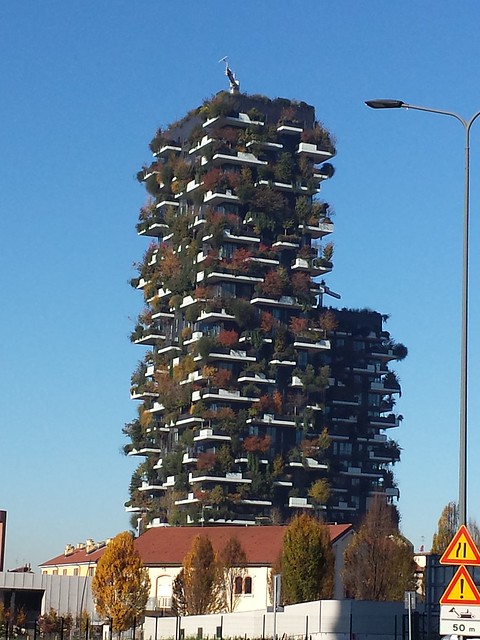

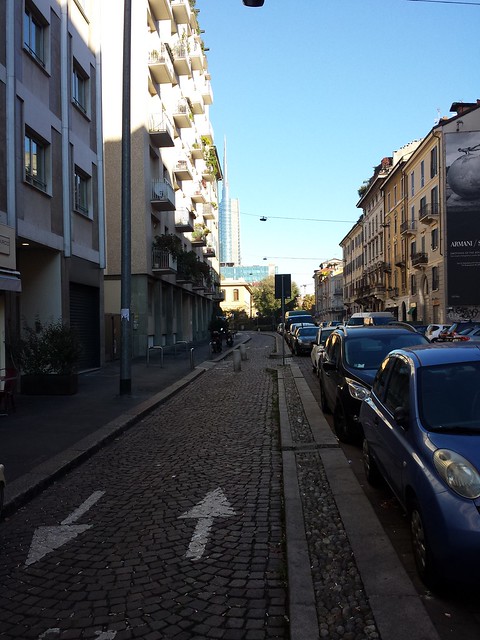
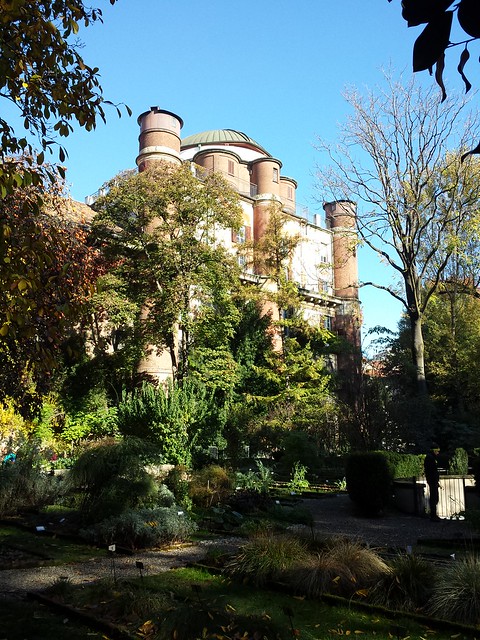
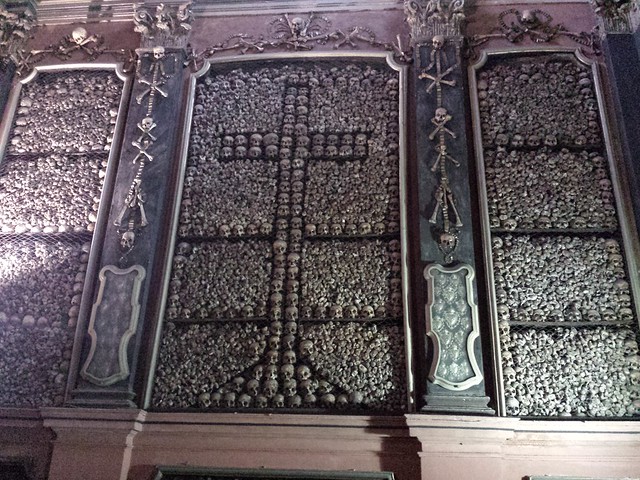
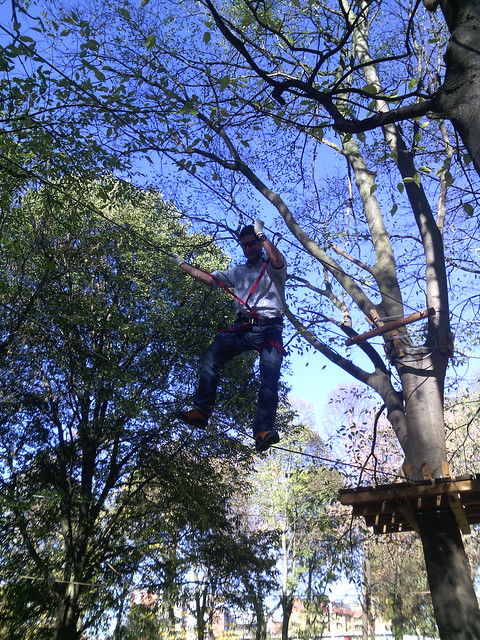

Leave a Reply